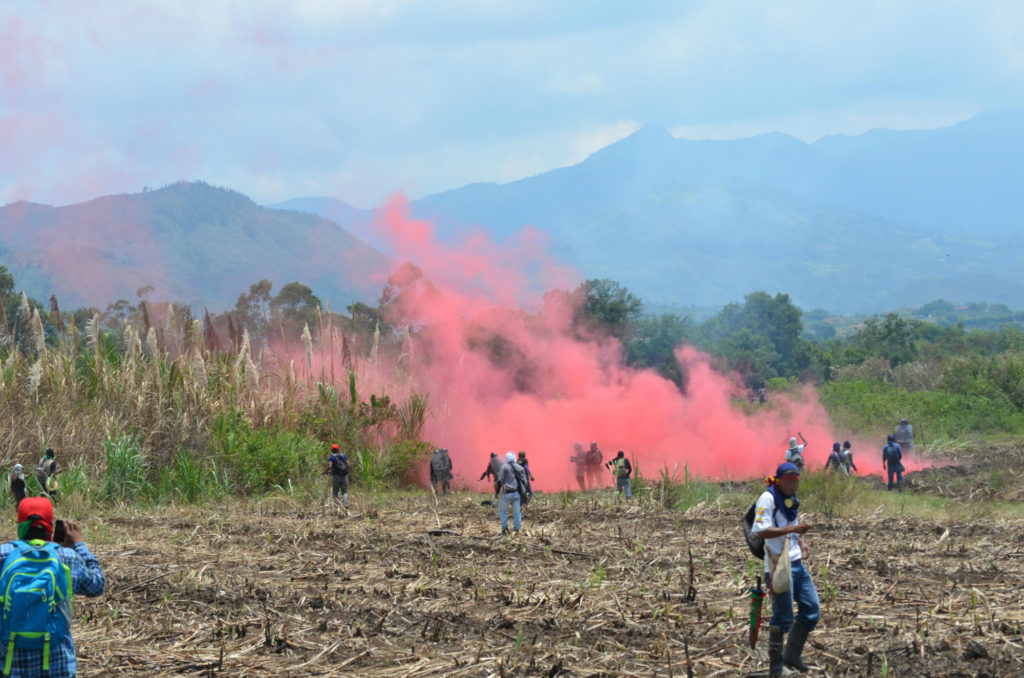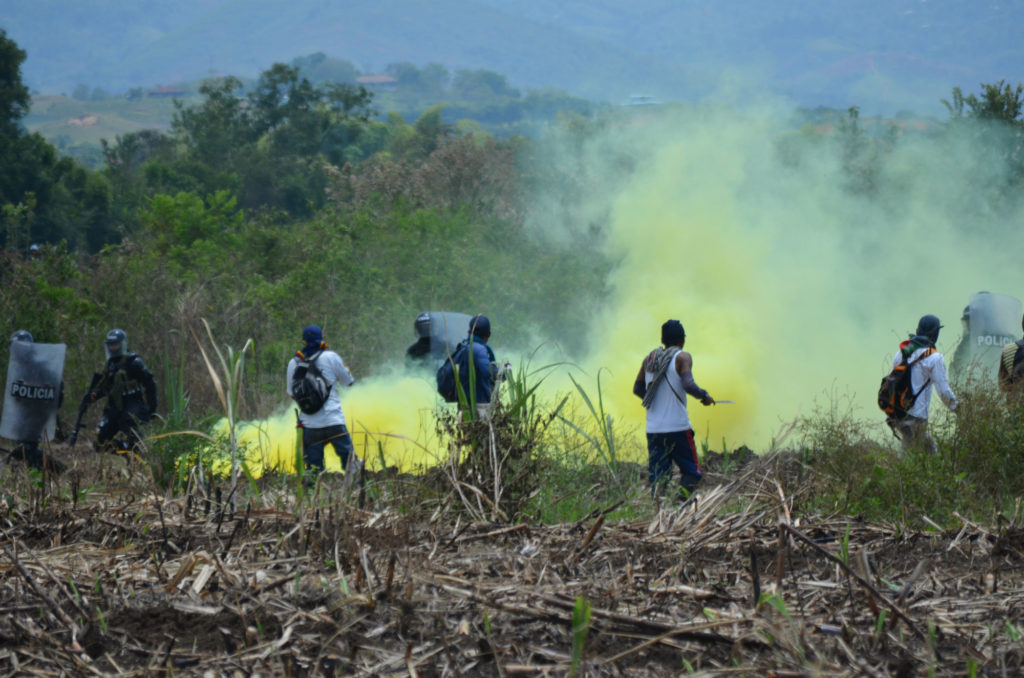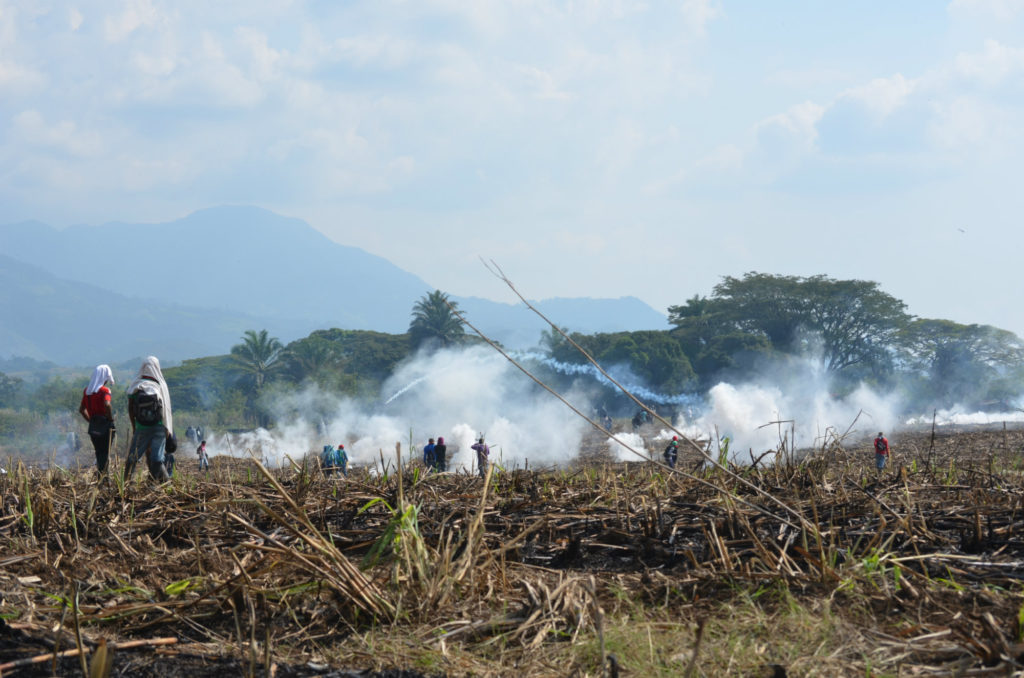International Reclaim the Fields Action Camp 2015
When: Friday 28th August (From 6pm) – Wednesday 2nd September 2015
Where: Dudleston Community Protection Camp, Shropshire (near the Wales/England Border).
About:
Reclaim the Fields UK (RTF) was born in 2011, as a star in a wider constellation of food and land struggles that reaches around the globe. Since 2011, camps and other RTF gatherings have helped support local communities in struggle, share skills, develop networks, and strengthen the resistance to exploitation, in Bristol, west London, Gloucestershire, Nottingham and Fife, among other locations.
Every two years there is also an international camp, where people from around Europe and beyond meet together to support a local struggle (standing against exploitative gold mining in Romania, and open cast coal mining in Germany, are some examples). People at these camps have shared their local stories and grown their ideas about resistance and reclaiming our food system, beyond national borders. This year, an international gathering will be held in the UK, in Dudleston, Shropshire, on the Welsh/English border.
The aims of the camp are:
• To support local communities in the west and north west of England, and the north of Wales with their struggles against fracking
• To increase participation in Reclaim the Fields
• To demonstrate visible, active opposition to prison construction
• To support Dudleston Community Protection Camp build a garden and infrastructure to become more self-reliant
• To demonstrate the interconnection between these struggles
• To inspire and radicalise everyone involved
What is happening:
• Two days of Action – Tuesday 1st & Wednesday 2nd September – demonstrations & actions against companies involved in the construction of the North Wales prison, as well as local fracking-related targets.
• Workshops & Skillshares – Over the bank holiday weekend there will be abundant opportunities to learn, share, discuss and connect with other people.
• Building & Growing on the site – Be part of installing gardens & low impact infrastructure at the community protection camp. Learn about permaculture, agroecology, forest gardening, mushroom growing, pallet construction, compost toilet making, off-grid electrics and more.
Why:
• This camp has been organised to support the local community in Dudleston to resist fracking in their area (as well as working with other local anti-fracking groups & protection camps in the North West who have been resisting extreme energy developments for a number of years). To find out more about their struggle visit: http://frack-off.org.uk/blockade/dudleston-community-protection-camp/
• It has also been organised to give attention to the North Wales Prison Project that is being constructed. This will be Europe’s second largest prison holding 2100 prisoners and the first of a number of ‘mega prisons’ that the UK Government wish to build. Click here for more information about the prison, why we are against it & links to articles about the prison industrial complex in the UK
How to get involved:
Click on the links below to find more practical information about the camp and how to get involved:
- Workshops & programme – what’s happening & how to contribute
- Planning Actions
- Directions & public transport information
- What to bring
- Safer Spaces Agreement
- Accessibility of the site
- Food & donations
This is a DIY/DIT(ogether)* camp and everyone is needed to get stuck in to make it happen. People are needed to:
• Support with publicity before the event – sharing the gathering online, putting posters up, encouraging your local group to get involved. People are also needed to help design the programme, respond to emails & plan facilitation.
• Helping with site set up & building infrastructure (planning this in advance & being on site a few days before the gathering)
• Signing up to a shift over the weekend to help with cooking, site set up & safety, being on the welcome tent & so forth
• Supporting local groups to organise actions
If you can help with any of these tasks please email info@reclaimthefields.noflag.org.uk
Spread the word:
• Poster design here: reclaimthefields.noflag.org.uk/wp-conte…
• Facebook event: https://www.facebook.com/events/560637597407933/




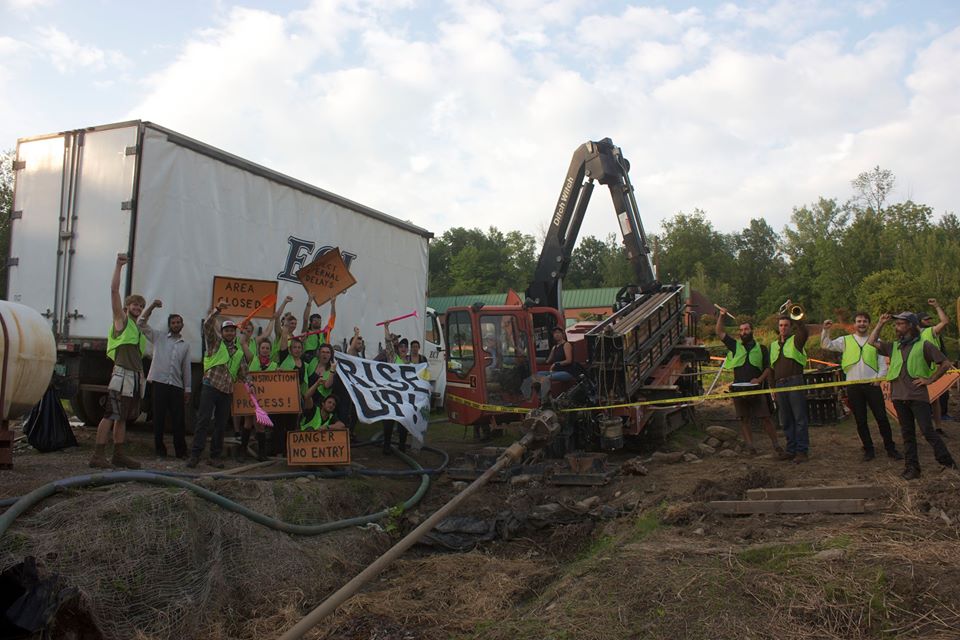

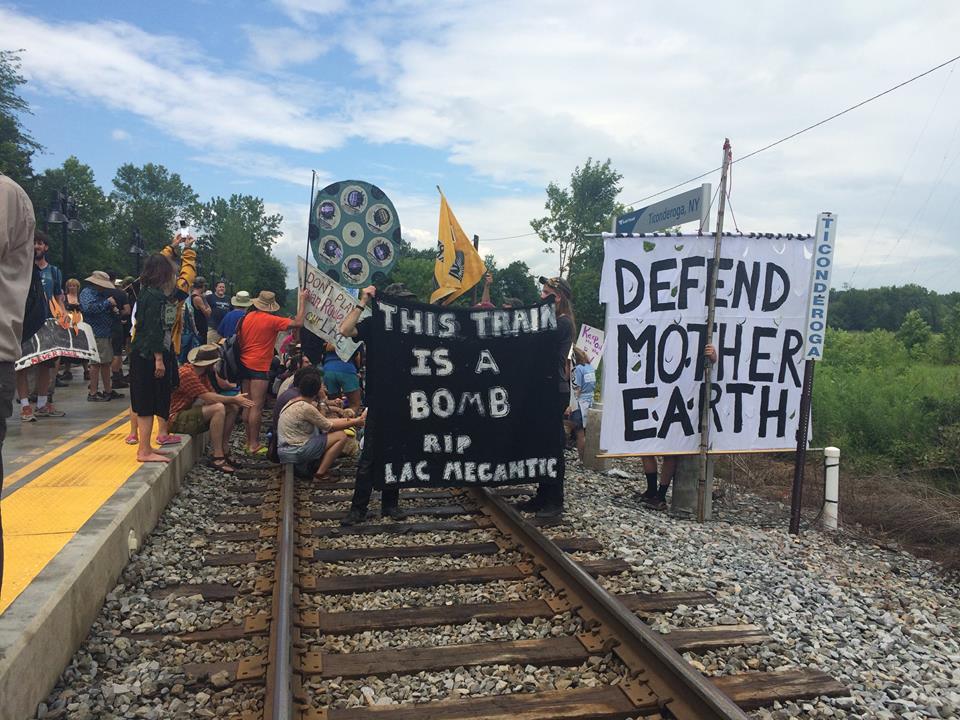







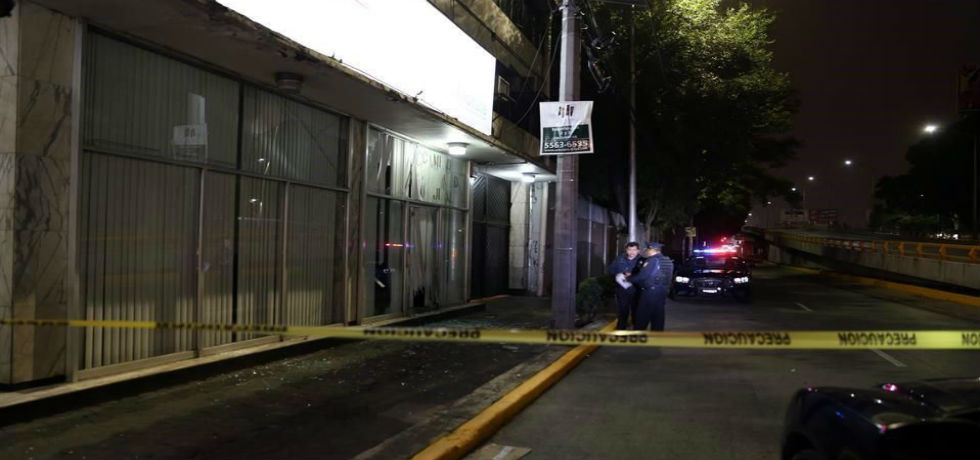


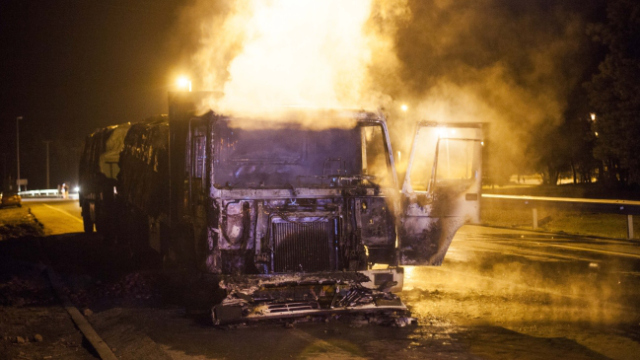
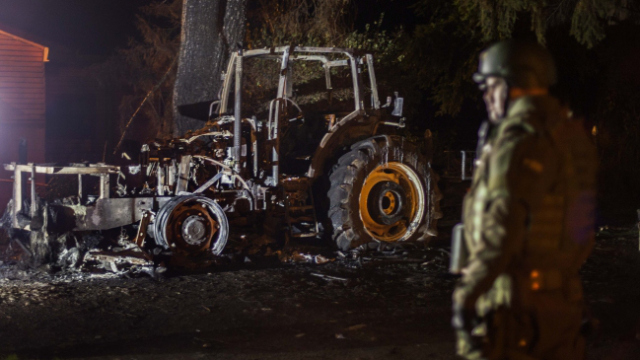


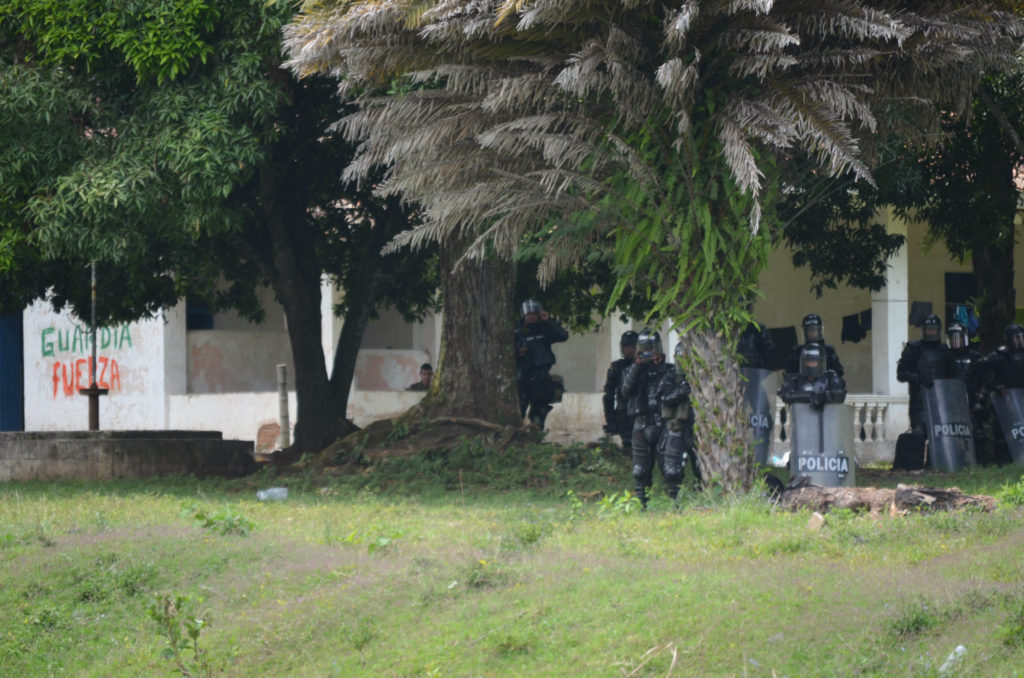
 The planters continued sowing the seeds in the growing heat, small handfuls as a symbolic gesture amidst the stumps of sugarcane and the cast tear gas grenades of earlier confrontations. In the distance other groups worked with maize and plantains, often among patches of ground where the sweet fermented smell of burned cane indicated where the plantations had burned during confrontations with the ESMAD.
The planters continued sowing the seeds in the growing heat, small handfuls as a symbolic gesture amidst the stumps of sugarcane and the cast tear gas grenades of earlier confrontations. In the distance other groups worked with maize and plantains, often among patches of ground where the sweet fermented smell of burned cane indicated where the plantations had burned during confrontations with the ESMAD.
